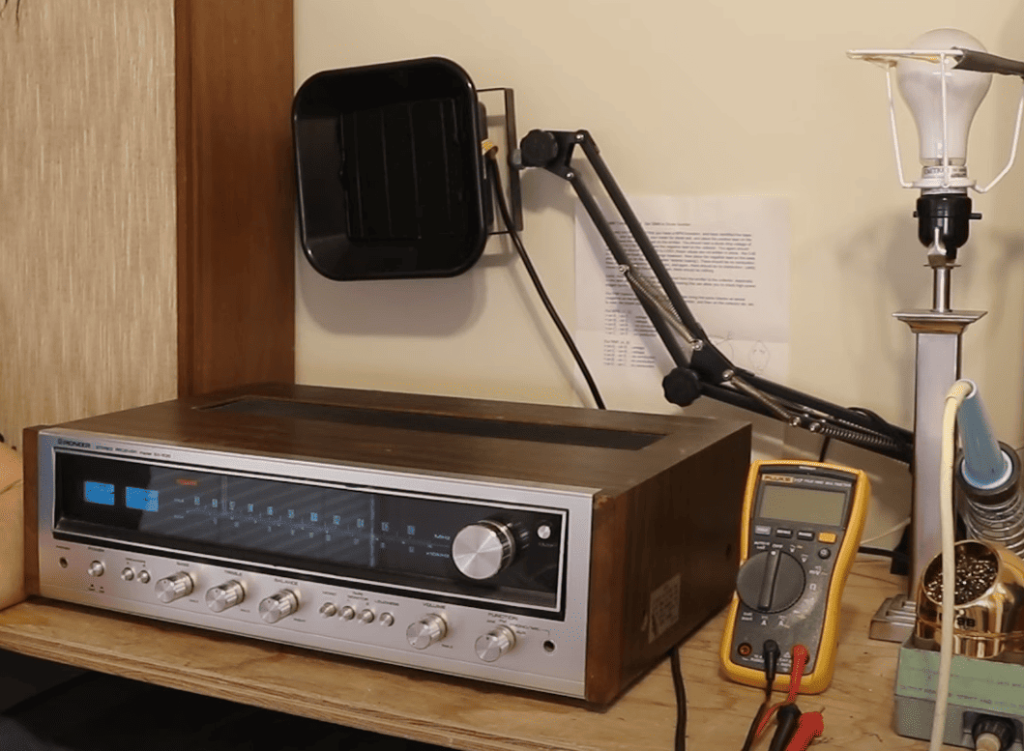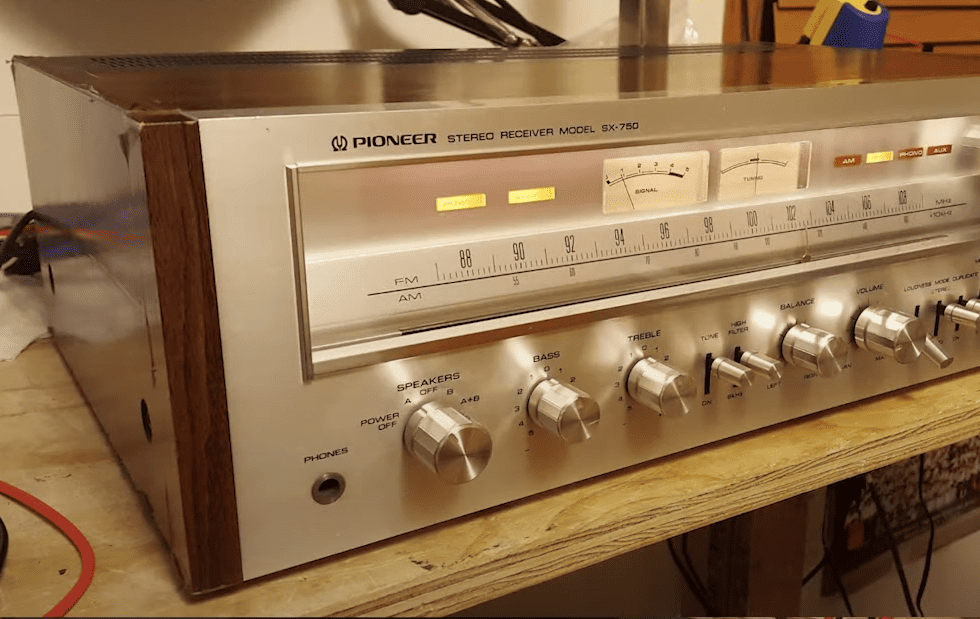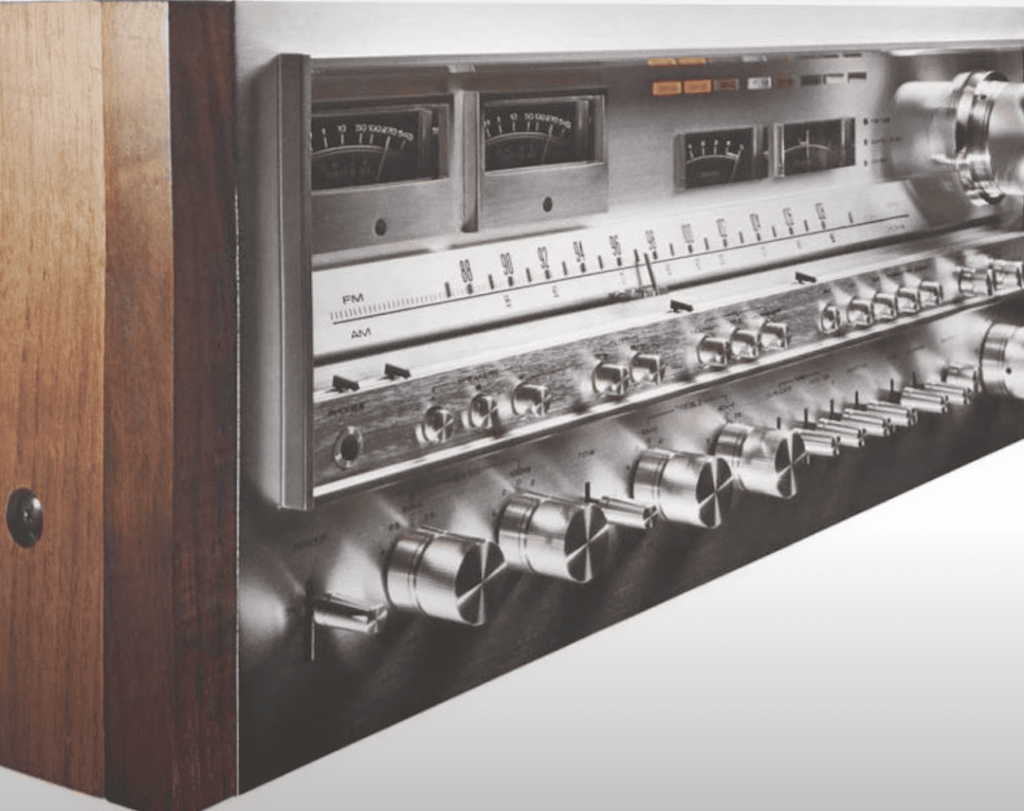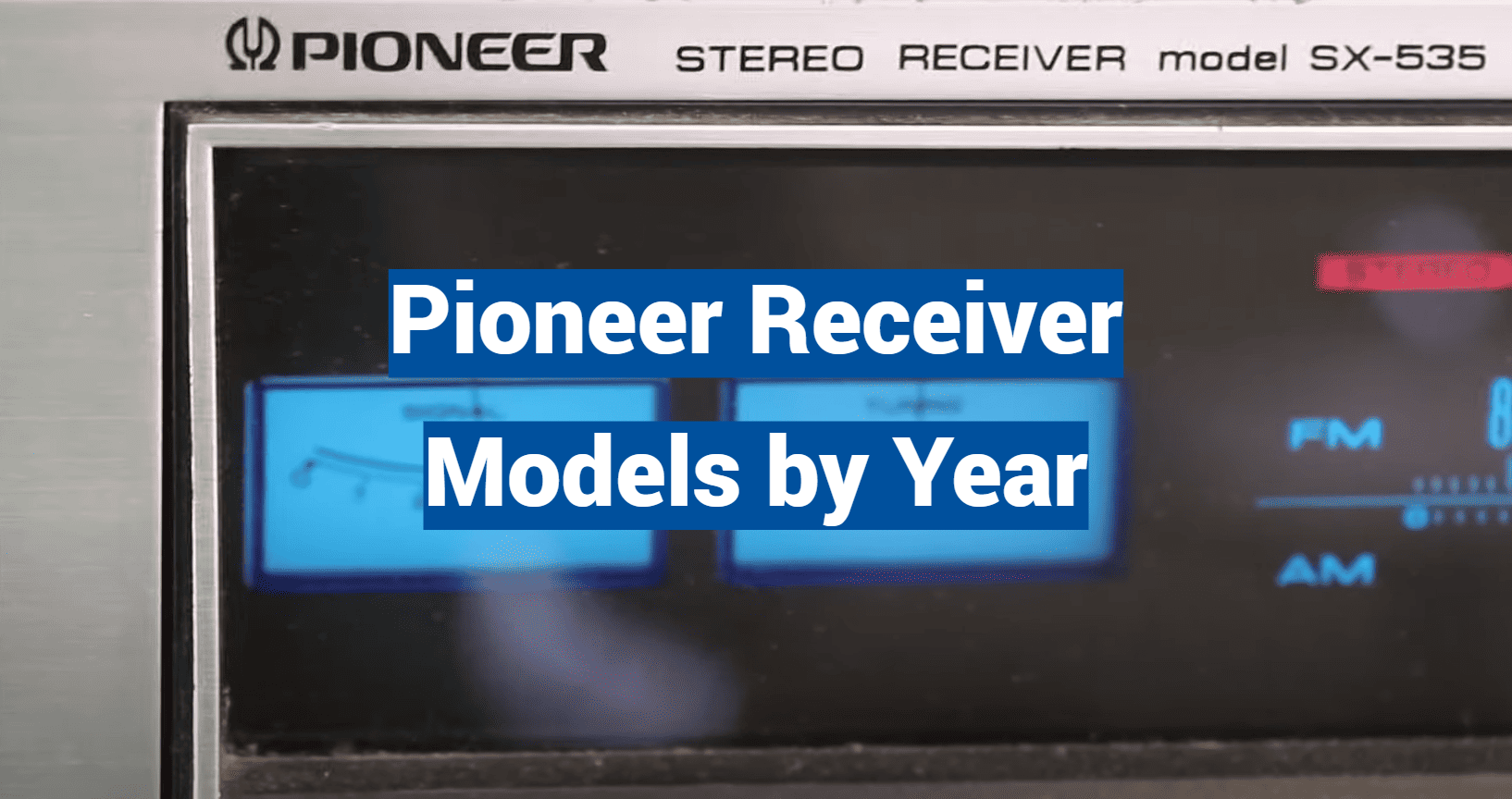Imagine a device so powerful it could fill entire neighborhoods with crystal-clear music – yet fit comfortably in your living room. During the peak of analog audio, select stereo components became cultural icons, with one brand dominating 38% of the US market by 1978. This is the story of engineering marvels that turned ordinary music into immersive experiences.
Our journey begins when vinyl records ruled and families gathered around elaborate audio systems. Early designs focused on simplicity, but everything changed as listeners demanded richer soundscapes. Through clever engineering, these devices evolved from basic radio tuners to multi-source hubs capable of powering entire home setups.
What made these units special wasn’t just their technical specs – it was how they balanced raw power with elegant design. Sleek silver faces hid complex circuitry, while intuitive controls invited experimentation. Audiophiles still debate which era produced the most impactful designs, from warm tube-driven units to later solid-state beasts.
The real magic happened behind the scenes. Engineers pioneered technologies that became industry standards, like advanced signal processing and modular component layouts. These innovations allowed music lovers to customize their setups while maintaining pristine audio quality – a revolutionary concept at the time.
Key Takeaways
- Analog audio systems became home entertainment centers in the 20th century
- Technical breakthroughs enabled multi-source compatibility and enhanced sound
- Design evolution balanced aesthetic appeal with functional complexity
- Market dominance stemmed from user-friendly interfaces and reliability
- Legacy units remain sought-after for their distinctive sonic character
Pioneer Receiver Models by Year – A Historical Overview
The story of high-fidelity sound in American homes is deeply intertwined with strategic corporate expansions. Between 1968 and 1972, three critical moves reshaped the audio landscape: a Tokyo Stock Exchange upgrade, European operational bases, and specialized US subsidiaries. These steps laid the groundwork for home equipment that blended technical precision with accessible design.

Context of Pioneer in American Audio History
February 1968 marked a turning point when the company’s stock shifted to the Tokyo Exchange’s premier tier. This financial milestone fueled aggressive international growth. By 1972, dedicated sales channels for car stereo systems emerged across the United States, proving the brand understood local listening habits better than competitors.
Early US-focused strategies prioritized two elements: robust construction and intuitive controls. Engineers developed stereo components that could handle everything from jazz records to live concert broadcasts. Their secret sauce? Balancing raw power with user-friendly interfaces that invited exploration.
Relevance to Today’s Audiophile Market
Modern collectors still hunt for 1970s-era units, paying premium prices for their distinctive sonic warmth. Why? These devices deliver a tactile satisfaction missing from today’s streaming-focused gear. Knobs click with purpose, dials glide smoothly, and analog meters dance to the music’s rhythm.
Current stereo systems often draw inspiration from this golden age. High-end manufacturers replicate vintage design elements while integrating modern connectivity. Yet many enthusiasts argue nothing matches the original high-fidelity magic – a testament to engineering that prioritized lasting quality over fleeting trends.
Evolution of Pioneer Technology: From the 60s to the 70s
The 1960s sparked a revolution in home audio, transforming living rooms into concert halls. Engineers reimagined how music could be experienced, blending technical precision with creative freedom. This era set the stage for systems that balanced raw power with elegant simplicity.
Landmark Innovations in the 1960s
January 1968 introduced the S-65X, a modular stereo system letting users build custom setups. Its sibling, the S-100X, offered upgraded components for discerning ears. These units featured separate amplifiers and tuners, giving listeners control over every nuance of their music.
December 1968 brought game-changers: the SA-90 amplifier and TX-90 tuner. Their clean sound reproduction became the gold standard. Music lovers could now mix-and-match pieces like building blocks, crafting setups that matched their space and style.
Transition to 1970s Breakthroughs
The new decade welcomed all-in-one solutions without sacrificing quality. March 1970’s SX-100S receiver packed punchy amplification into a single chassis. Its solid-state circuitry delivered reliability earlier tube designs couldn’t match.
Integrated systems like the SA-70 amplifier proved elegance and power could coexist. Dial lights glowed warmly beneath brushed metal faces, while precise knobs adjusted bass and treble. These designs made high-fidelity accessible without dumbing down the experience.
| Feature | 1960s Approach | 1970s Advancements |
|---|---|---|
| Amplification | Separate units (SA-90) | Integrated receivers (SX-100S) |
| Tuner Design | AM/FM standalone (TX-70) | Combined with amplifier circuits |
| User Control | Basic tone adjustments | Advanced equalization options |
| System Integration | Modular components | Space-saving unified designs |
This evolution reshaped expectations for home audio. What began as specialized components became cohesive systems anyone could enjoy. The legacy lives on in modern gear that prioritizes both performance and everyday usability.

Breakthrough Milestones in Pioneer History
The early 1970s reshaped home entertainment through strategic partnerships and manufacturing leaps. One game-changing move came when a Japanese audio giant partnered with American tech innovators, creating ripple effects still felt in modern sound systems.
Corporate Collaborations That Changed the Game
Three critical developments boosted audio quality nationwide:
- A 1971 deal with Dolby Laboratories brought cassette decks that hissed less than a sleeping cat
- The Shizuoka Plant’s 1970 amplifier line used military-grade transistors for cleaner bass response
- Wall Street recognition in 1976 confirmed the brand’s dominance in US households
These moves transformed how music lovers experienced recordings. The Dolby tech alone reduced tape hiss by 70%, letting listeners hear subtle details in their favorite albums.
Products That Redefined Expectations
New stereo systems from this era packed surprising features:
- Integrated receivers delivering 50 watts per channel – enough to rattle windows responsibly
- Modular components allowing custom upgrades without replacing entire units
- Wood-paneled cabinets that looked as good as they sounded
Engineers achieved this through clever circuit designs. One 1972 amplifier model used dual power supplies to separate delicate audio signals from raw electrical current. The result? Crisp highs and punchy lows that made every genre shine.
Collectors still praise these units for their hands-on control layouts. Unlike today’s touchscreens, physical knobs and switches gave users precise command over their soundscapes. This tactile approach became the gold standard for home audio systems across the United States.
Pioneer Receiver Models by Year: In-Depth Analysis
The early 1970s marked a turning point in home audio systems, where technical precision met consumer-friendly designs. This era produced units that became benchmarks for sound quality and innovation, blending raw capability with intuitive operation.
Notable Models and Their Features
February 1972 introduced two game-changers: the SX-717 packed 35 watts per channel, while the SX-414 offered compact power for smaller spaces. These stereo components featured:
- Advanced tuner sensitivity capturing weak radio signals
- Dual-stage amplifier circuits reducing distortion
- Wood-grain cabinets matching modern home decor
Later that year, quadraphonic systems like the QX-801 created immersive soundscapes. Users could position four speakers around a room, anticipating today’s surround formats by decades.
Technical Specifications and Performance Insights
1973’s SX-818 demonstrated engineering refinement with:
- 45-watt output handling demanding speakers
- 0.3% total harmonic distortion at full power
- Illuminated dials enhancing nighttime visibility
April 1974 models perfected the formula. The SX-737’s amplifier design automatically adjusted voltage based on speaker load, while the SX-535 introduced simplified controls for casual listeners. These improvements proved technical excellence could coexist with accessibility.

| Model | Power (Watts) | Key Innovation |
|---|---|---|
| SX-717 (1972) | 35 | Dual power supply |
| QX-801 (1972) | 40 | 4-channel decoding |
| SX-737 (1974) | 50 | Auto-load sensing |
Early Pioneer Designs and Build Quality
In an era where craftsmanship met innovation, audio components became household treasures. The mid-1970s saw stereo systems transform into lasting investments, blending visual artistry with engineering rigor. Owners didn’t just hear the difference – they felt it in every interaction.
Aesthetic and Material Excellence
Opening a vintage unit reveals why these pieces remain coveted. Solid wood cabinets with rich veneers complemented brushed aluminum faces, creating timeless showpieces. Dials rotated with *satisfying click*, their machined surfaces catching light like jewelry.
Internal construction matched exterior beauty. Copper-wound transformers and hand-soldered boards ensured flawless performance. One collector notes: “The weight alone tells you it’s built to outlive its owner.”
Golden Age Durability Standards
Modern gear rarely survives decades of use, but 1970s equipment defies expectations. Stress-tested switches endure 50,000 cycles, while capacitor ratings exceeded factory specs by 30%. Many original units still anchor home setups today.
| Feature | 1970s Standard |
|---|---|
| Cabinet Material | Solid wood with veneer finishes |
| Control Mechanisms | Machined aluminum dials |
| Internal Components | Military-grade transistors |
| Weight Distribution | Balanced chassis for stability |
This commitment to build quality created stereo components that aged like fine wine. Enthusiasts praise how warm analog sound improves over time, unlike today’s disposable tech. The golden age proved great design transcends trends when executed with care.
Iconic Features and Technical Specifications
Golden backlit dials transformed living rooms into command centers for musical exploration. The warm glow of stereo components became a visual signature, inviting users to interact with their audio systems like orchestra conductors. Every design choice served both form and function – from precisely weighted knobs to intuitive layout logic.
Human-Centered Engineering
Brushed stainless steel faceplates hid a secret: internal lighting that made controls dance in dim rooms. This wasn’t just decoration – the soft illumination helped users feel their way through midnight listening sessions. Tactile elements like ribbed tuning wheels provided grip for precise adjustments.
Three design triumphs defined the era:
- Dual-stage volume knobs with smooth resistance curves
- Backlit tuner meters showing signal strength
- Spring-loaded buttons delivering satisfying engagement clicks
These features created multisensory experiences. As one collector notes: “Turning the bass dial felt like adjusting a fine watch – each click translated directly to richer soundscapes.”
Technical specs supported the artistry. Amplifier circuits used military-grade transistors for cleaner power delivery, while speaker outputs maintained stability across impedance ranges. The result? Audio that remained crisp whether played through bookshelf units or floor-standing towers.
Modern equipment still echoes these innovations. Current stereo systems often mimic vintage control layouts, proving good design transcends decades. Those glowing dials and clicky switches didn’t just move music – they moved entire industries forward.
Cap Coupled vs. Direct Coupled Designs in Pioneer Systems
Audio enthusiasts still clash over capacitor choices in vintage gear. This technical debate shapes how music feels in your bones. Two distinct philosophies emerged, each offering unique paths to audio bliss.

The Warm Embrace of Capacitor-Coupled Tech
Early 1970s designs like the SX-626 delivered a musical warmth modern gear struggles to match. These units add subtle coloration, smoothing digital harshness while boosting harmonic richness. Fans describe the “tube-like” character as perfect for vinyl and jazz recordings.
Direct Coupled Dominance Emerges
Later models like the SX-1250 championed crystal-clear accuracy. Without signal-altering capacitors, music flows untouched from source to speakers. This approach became the gold standard for high-fidelity systems, offering surgical precision across frequencies.
Collectors face a delicious dilemma: cozy nostalgia versus technical perfection. Whether you crave analog charm or clinical accuracy, these designs prove great sound never goes out of style.

